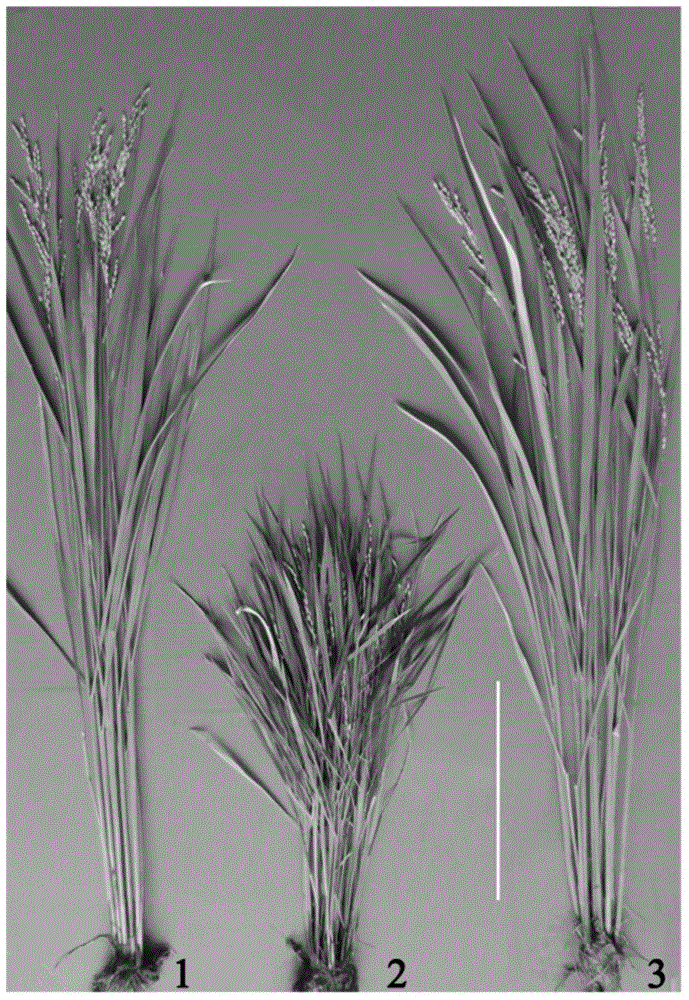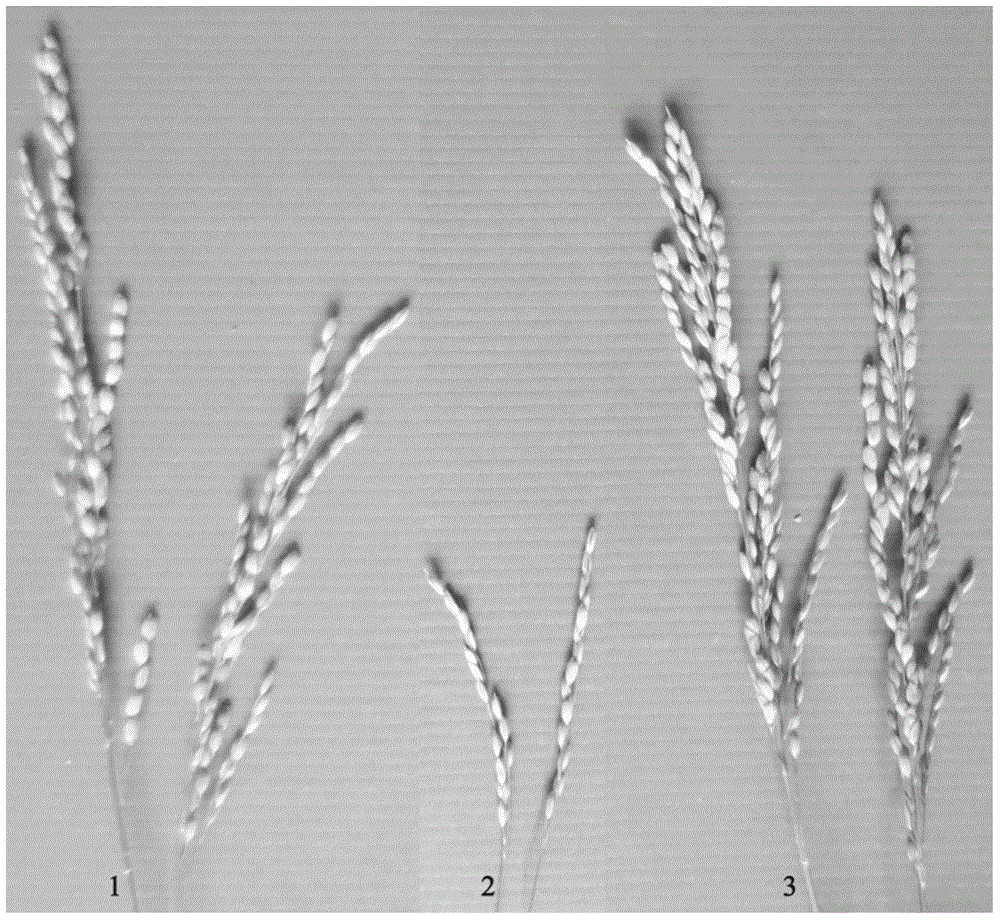Application of OsmiR156f gene in rice effective tillering increasing
A technology of transgenic rice and genes, applied in the field of agricultural biology, can solve the problems of high proportion and large number of ineffective tillers, and achieve the effect of increasing the number of effective tillers and reducing the proportion of ineffective tillers.
- Summary
- Abstract
- Description
- Claims
- Application Information
AI Technical Summary
Problems solved by technology
Method used
Image
Examples
Embodiment 1
[0016] Embodiment 1 Amplification of OsMIR156f gene fragment
[0017] According to the Nipponbare genome sequence published on the Internet, Primer 3.0 software was used to design primers (synthesized by a biological company). The primer sequences were: forward primer 5'-CGCCCACCTTTCTTCTCCCA-3' (see SEQ ID No.2), reverse primer 5' - AAGGAGCAGTTAGATAATGGAG-3' (see SEQ ID No. 3). Prepare the synthetic primers with double distilled water to a concentration of 10 μmol L -1 The solution. Genomic DNA was extracted from rice Nipponbare leaves by CTAB method. Using the extracted DNA as a template, high-fidelity pfu Taq enzyme was used for PCR amplification to obtain the pre-precursor pri-miR156f sequence corresponding to OsMIR156f in the OsmiR156 family. The reaction system for PCR amplification was 50 μL: DNA template 1.0 μL, Forward primer 0.5 μL, reverse primer 0.5 μL, 10 μmol L -1 dNTP 0.5 μL, 10X buffer 5.0 μL, pfu Taq enzyme 0.3 μL, double distilled water 42.2 μL. The ampli...
Embodiment 2
[0018] Example 2 Construction of constitutive overexpression vector pWM-UBQpro-OsMIR156f (UbiPro-OsMIR156f)
[0019] The constitutive promoter is preferably Ubiquitin1 promoter. The vector pWM101 was digested with HindⅢ / sal I, the intermediate vector pBS-pUbq was digested with HindⅢ / BamH I, and the intermediate vector pBS-OsMIR156f was digested with BamH I / sal I respectively, and the required fragments were recovered and processed with T4ligase. The three fragments were ligated to obtain the vector. For information about the intermediate vector pBS-pUbq, refer to the literature report (Wei et al. PLoSONE.2013, 8: e59720). The constructed UbiPro-OsMIR156f vector was introduced into Agrobacterium EHA105 strain by freeze-thaw method. The bacterial resistance of this vector is kanamycin and the plant resistance is hygromycin.
Embodiment 3
[0020] Example 3 Construction of stem-specific expression vector pWM-D18p-OsMIR156f (D18Pro-OsMIR156f)
[0021] The stem-specific promoter is preferably the promoter of OsGA3ox2 gene. The Ubiquitin1 promoter in the UbiPro-OsMIR156f vector was replaced by the about 2.1Kb promoter (D18 promoter) of the OsGA3ox2 gene by restriction enzyme ligation, and the related information of the D18 promoter sequence was reported in the literature (Sakamoto et al. Nature Biotechnology. 2003, 21:909-913). The constructed D18Pro-OsMIR156f vector was introduced into Agrobacterium EHA105 strain by freeze-thaw method. The bacterial resistance of this vector is kanamycin and the plant resistance is hygromycin.
PUM
 Login to View More
Login to View More Abstract
Description
Claims
Application Information
 Login to View More
Login to View More - R&D
- Intellectual Property
- Life Sciences
- Materials
- Tech Scout
- Unparalleled Data Quality
- Higher Quality Content
- 60% Fewer Hallucinations
Browse by: Latest US Patents, China's latest patents, Technical Efficacy Thesaurus, Application Domain, Technology Topic, Popular Technical Reports.
© 2025 PatSnap. All rights reserved.Legal|Privacy policy|Modern Slavery Act Transparency Statement|Sitemap|About US| Contact US: help@patsnap.com



